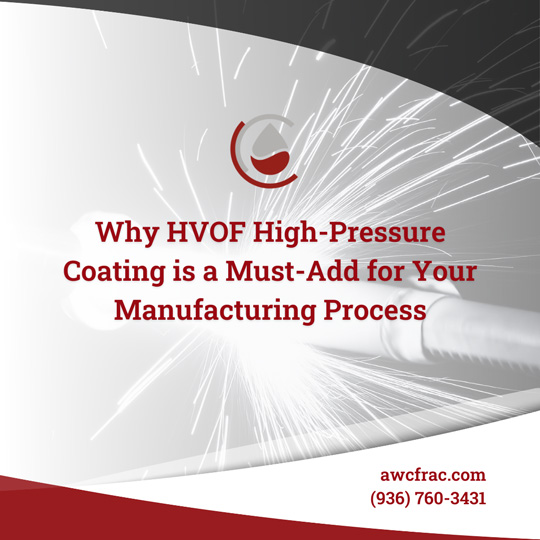
HVOF coating, known as High-Velocity Oxygen-Fuel, is a hard surfacing technique that offers many benefits for frac equipment and is used in many industrial applications today. This versatile coating gives frac equipment several advantages over other techniques, including hardness, heat resistance, and wear resistance. But there are other benefits you may not realize HVOF offers, so keep reading to find out more about this hard surfacing technique that’s quickly becoming the standard in the frac industry.
How does HVOF coating help the design, durability, and cost?
- HVOF coating can help improve the design of frac equipment by providing a harder surface that is more resistant to wear and tear.
- This type of coating can also help extend the life of frac equipment by protecting it from the harsh conditions it encounters during use.
- In addition, HVOF coating can help reduce the cost of frac equipment by reducing the need for frequent repairs or replacements.
- HVOF coatings are also highly resistant to corrosion, making them an ideal choice for protecting frac equipment from the corrosive effects of chemicals and other substances used in the fracking process.
How can HVOF be applied to other industries?
HVOF coatings can also be used in other industries where manufacturing, HVOF, and hard surfacing are needed. In addition to offering superior wear resistance, corrosion resistance, and abrasion resistance, HVOF coatings can also extend the life of equipment and reduce downtime.
There are many benefits associated with using an HVOF hard surface coating like 86-10-4 (WC – Co – Cr) on any industrial equipment:
It provides a durable hard surface on which no fuel or abrasive will make an impact; it is environmentally friendly; it’s cost effective; it doesn’t contain asbestos or crystalline silica; and there’s little to no change in thermal efficiency. The heat generated by the friction between materials during usage creates little energy loss.
What are the different types of HVOF coatings?
HVOF coatings typically contain Tungsten, Carbide, Cobalt and Chrome (86-10-4), but can also be made of other materials like Nickel, Silicone, Boron and Iron (53, 63, 69 and 88 HV). Thermal spray HVOF coatings are applied using a High Velocity Oxygen-Fuel gun which melts and propels the coating material onto the surface to be coated (see diagram of gun below). The result is a very hard and erosion-resistant coating. HVOF coatings are often used on frac valves, plungers and other types of equipment that are exposed to high wear and tear. They can also be used for weather proofing and to protect against corrosion.

AWC / Regate HVOF Benefits
HVOF coatings are harder than other coatings, making them more resistant to wear and tear. Applying 86-10-4 by HVOF produces a coating 5 times stronger than plasma spray coatings. They also have a lower coefficient of friction, which can reduce wear on moving parts. HVOF coatings can also withstand higher temperatures, making them ideal for use in high-temperature environments. We would love to use our 21 + years of experience to assist you with your HVOF needs. For the best options and expert application, please contact one of our Regate HVOF professionals and download our capabilities sheet here.
